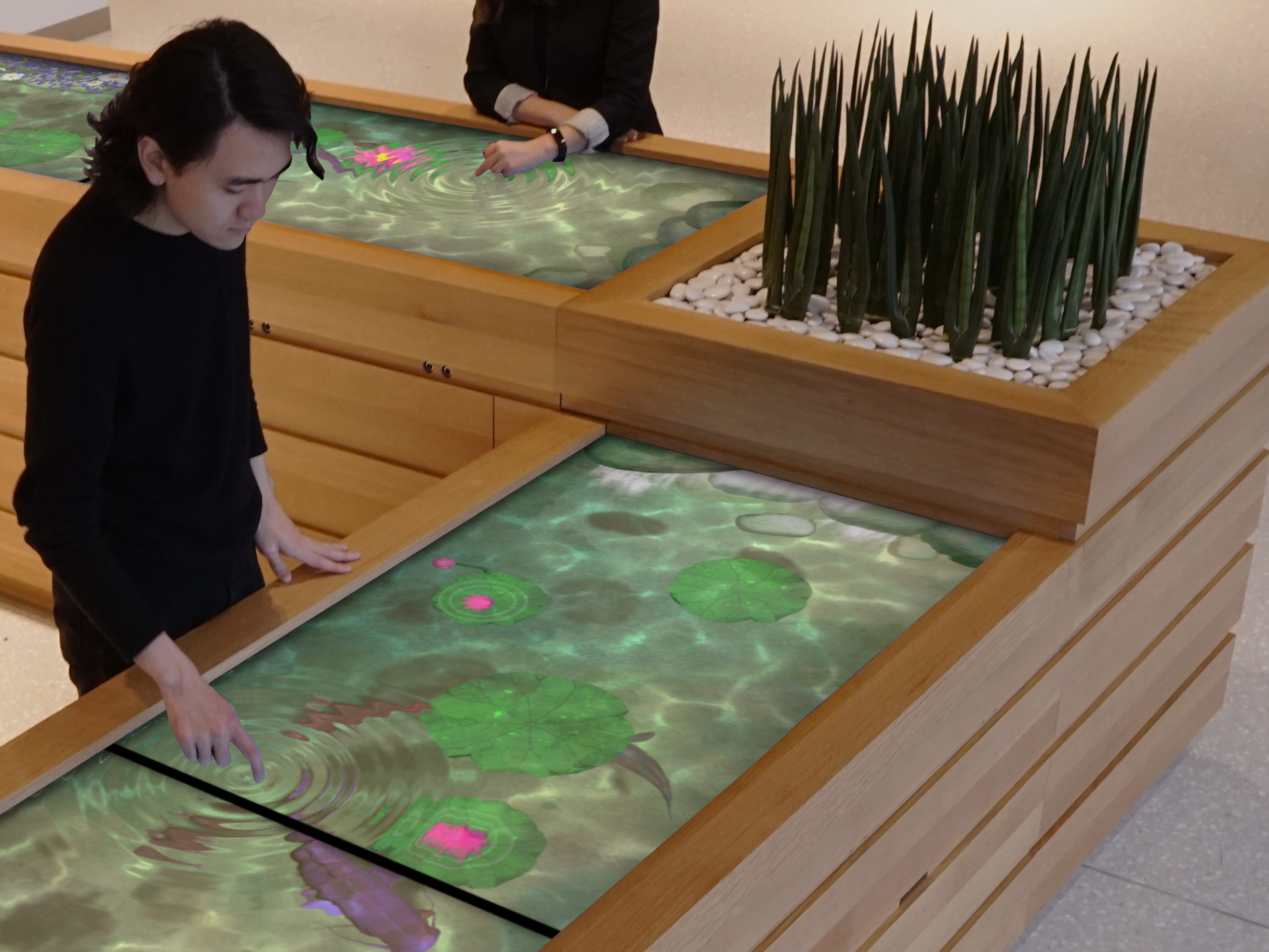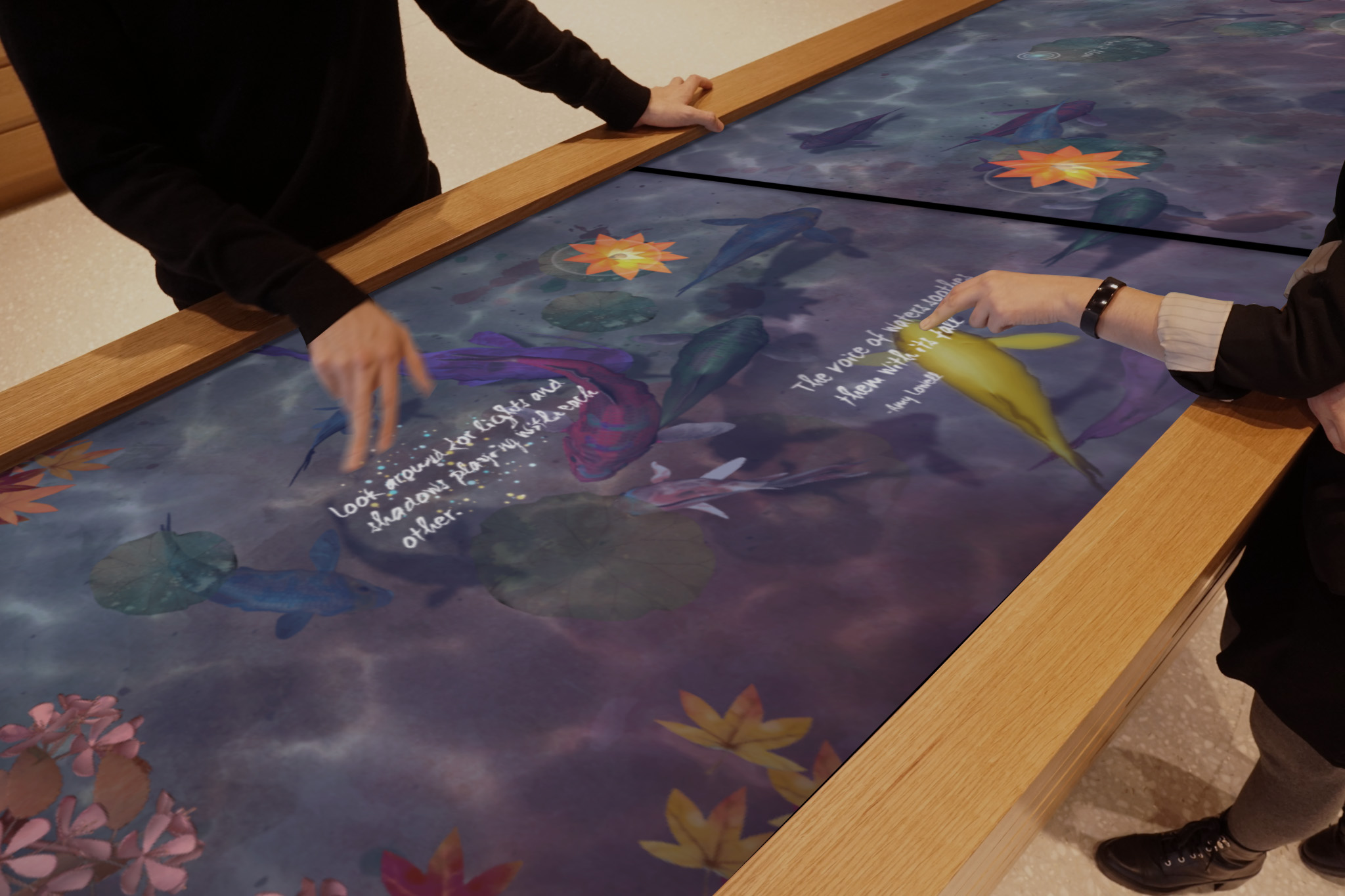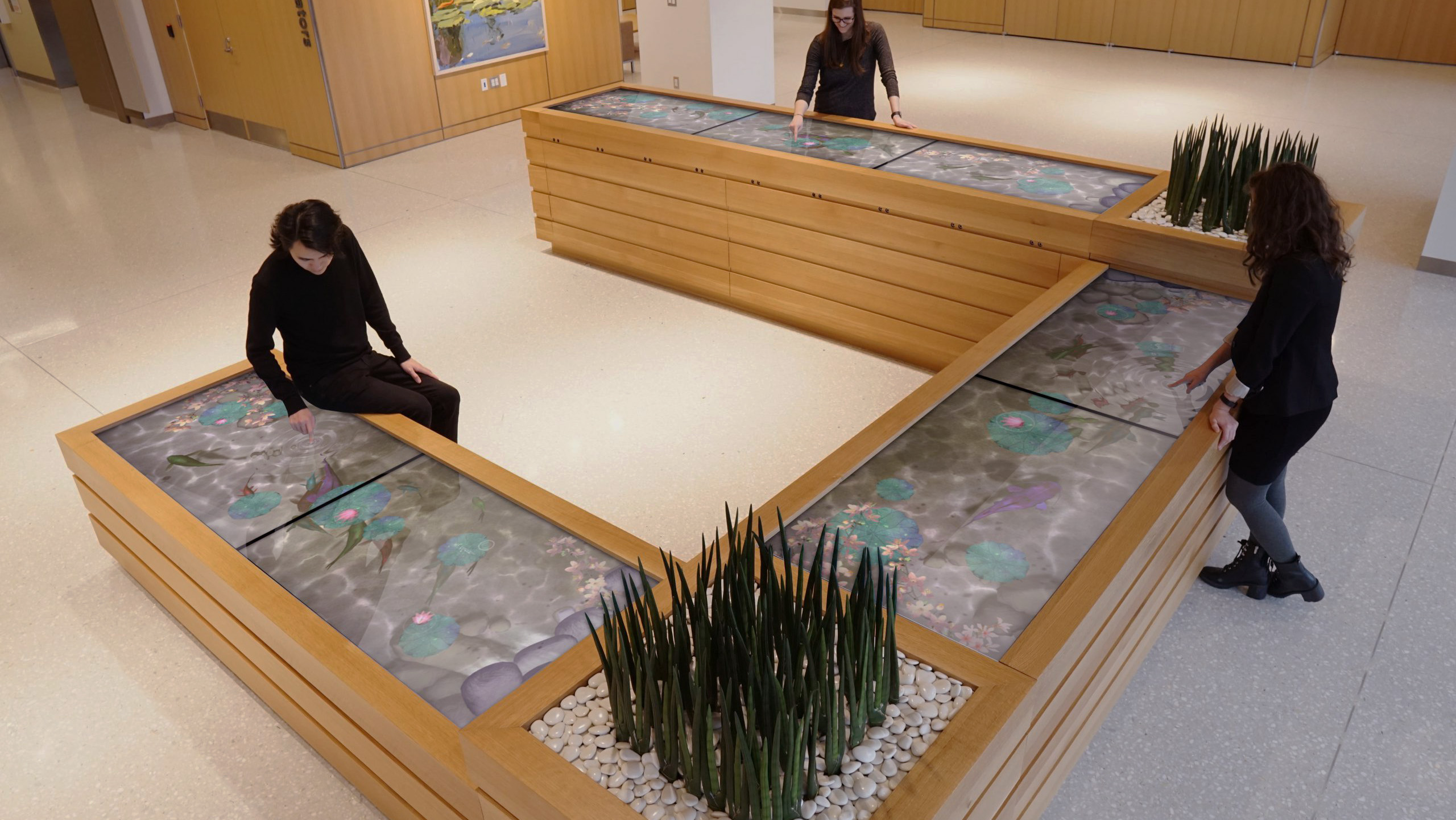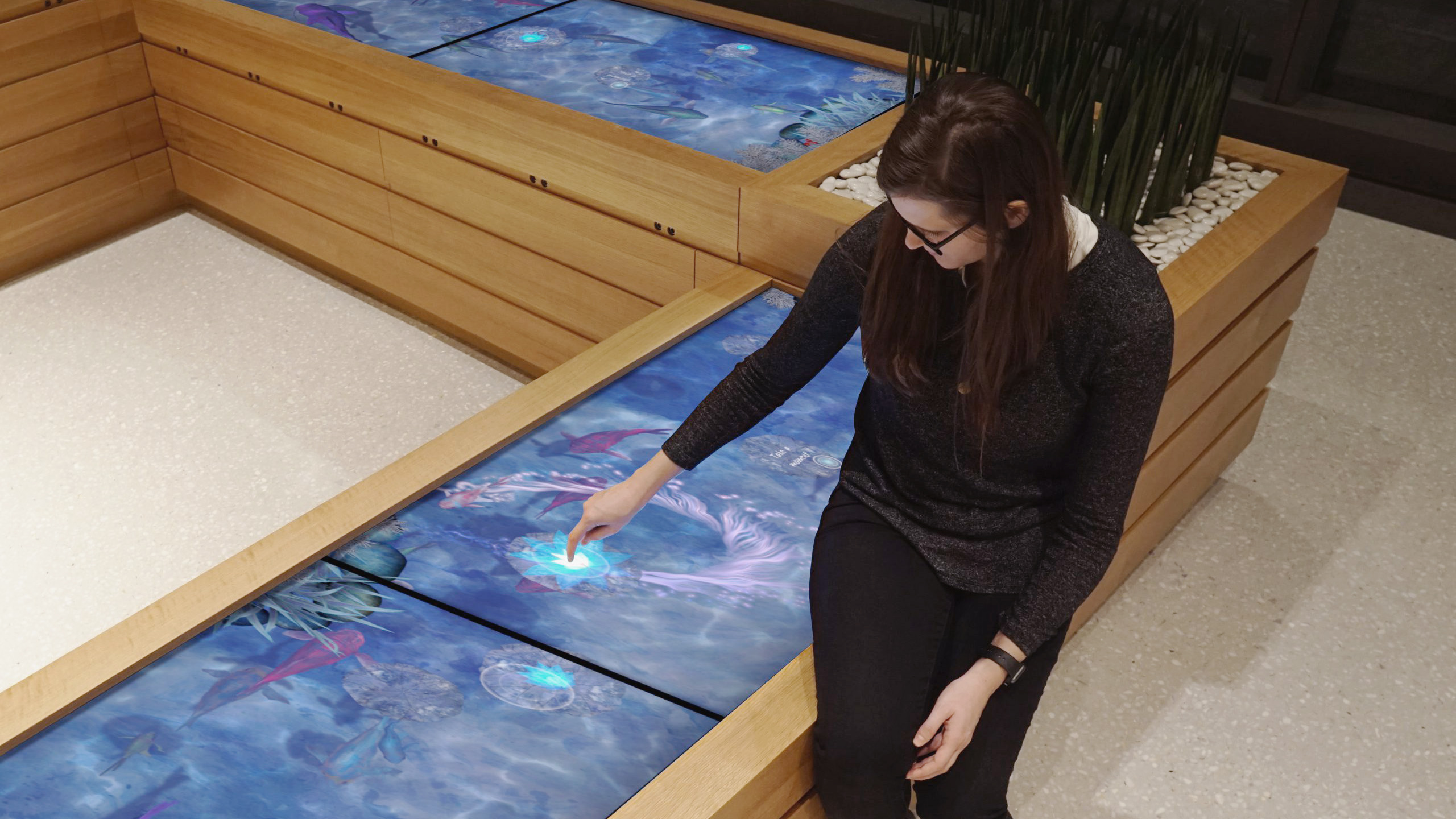Immersive Experiences

In a healthcare environment often filled with anxiety, Memory Koi was designed to offer a moment of serenity. Developed in collaboration with ArtGuild and Memorial Sloan Kettering Cancer Center, the digital installation is part sculpture, part interactive media—creating a peaceful, reflective space within the David H. Koch Center for Cancer Care.
Using responsive technology, immersive motion graphics, and organic form, Memory Koi invites patients and visitors to interact—or simply observe—at their own pace. Whether engaging deeply or briefly passing by, users experience a gentle shift in atmosphere, offering calm and a sense of agency in an environment often outside of their control.


